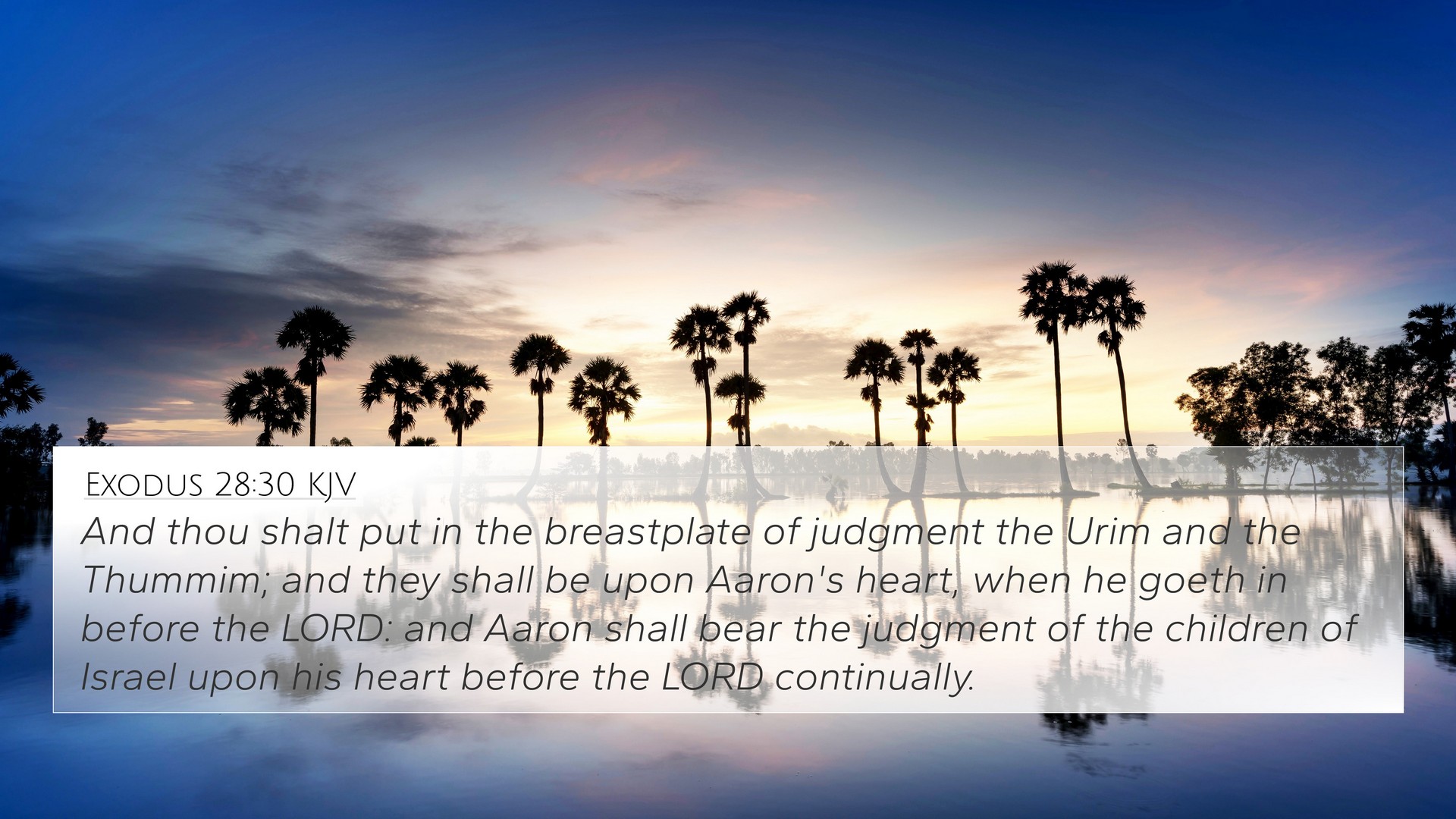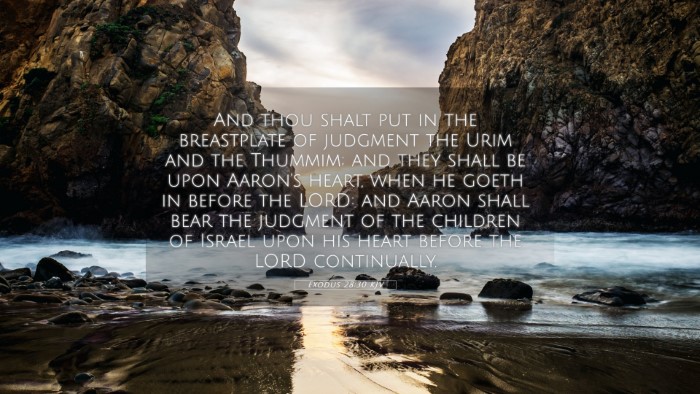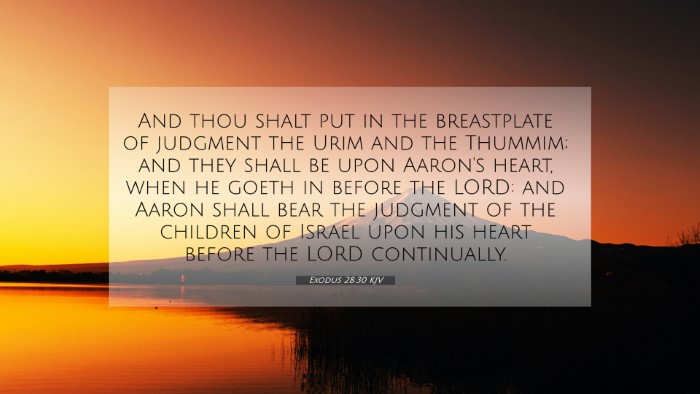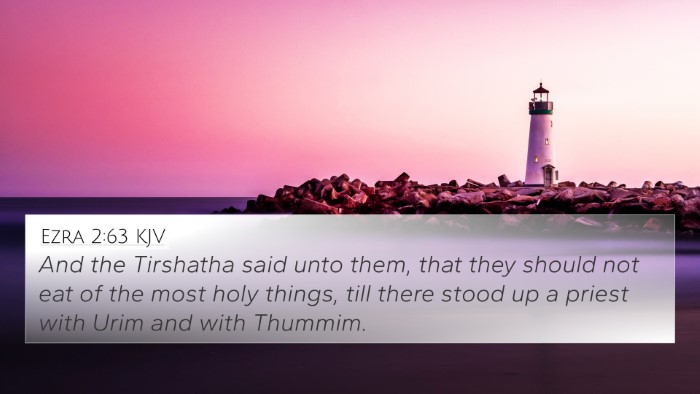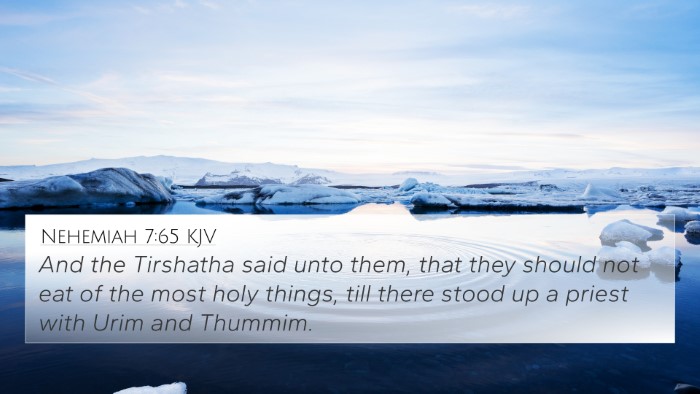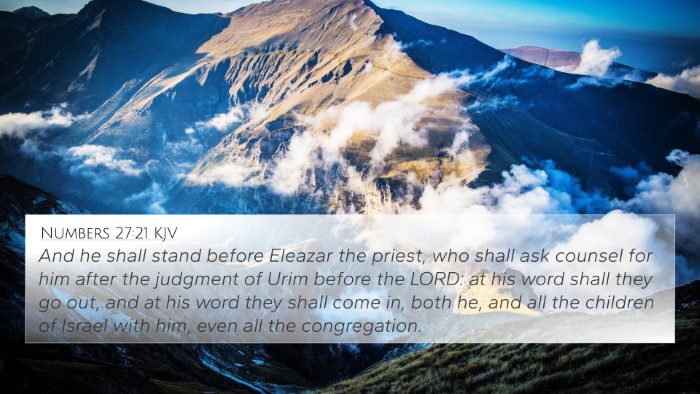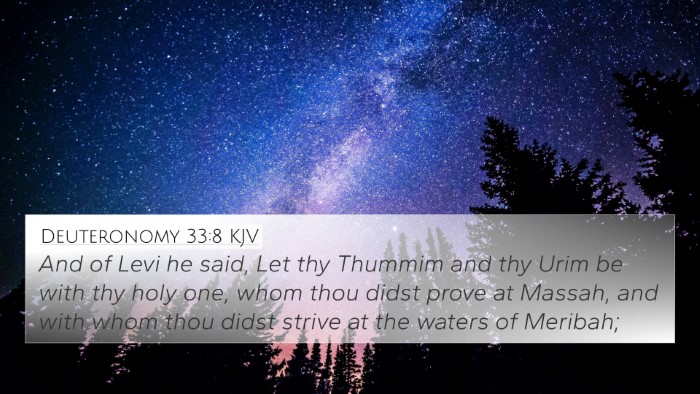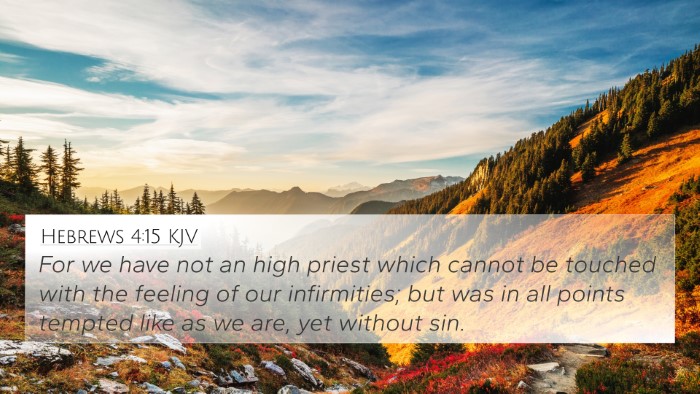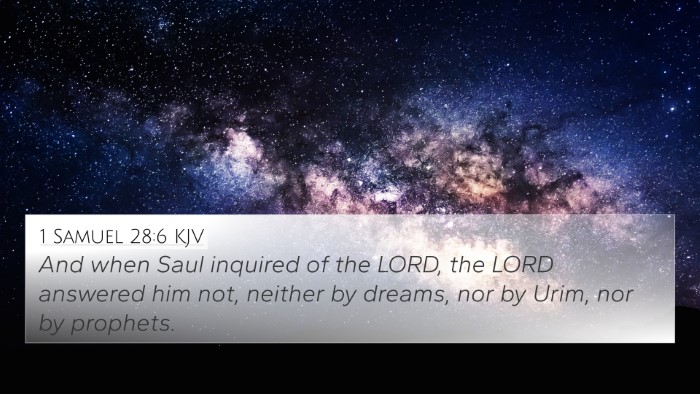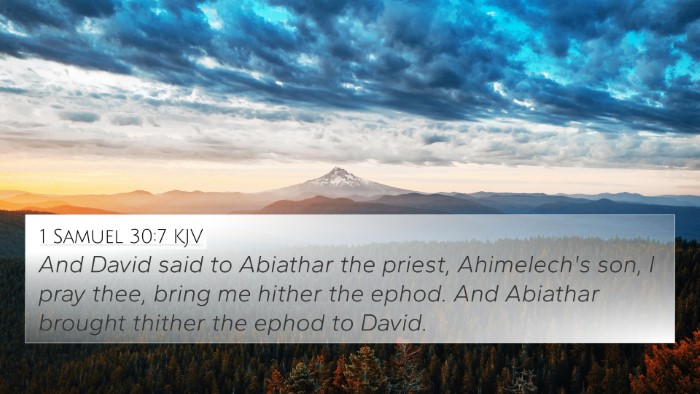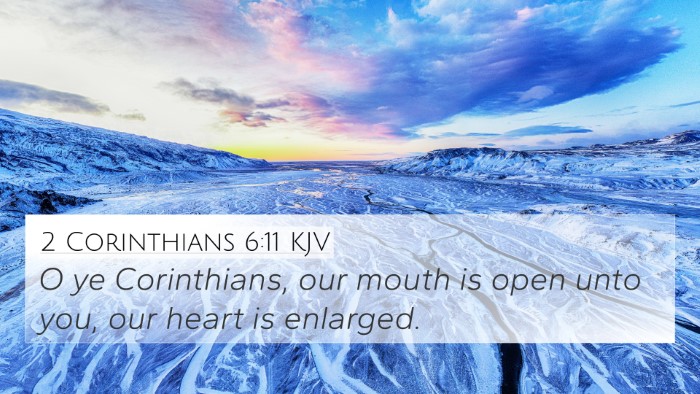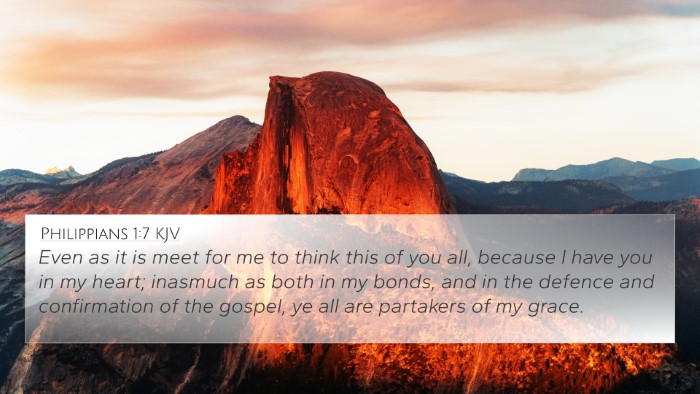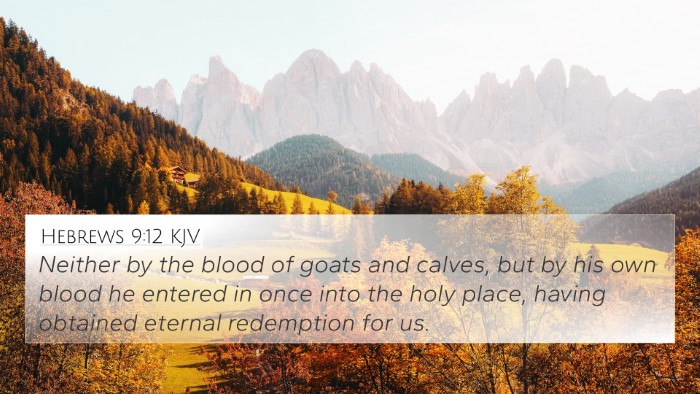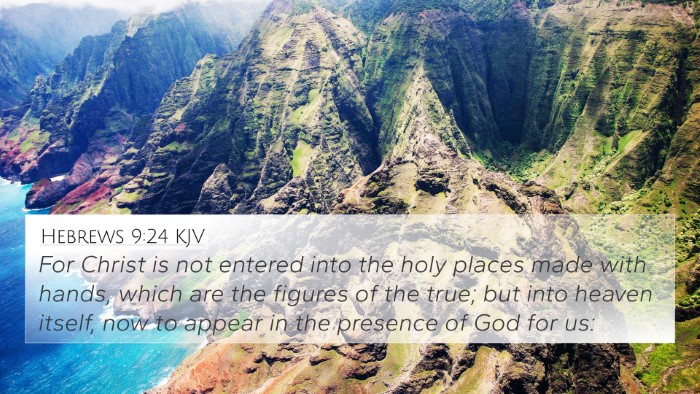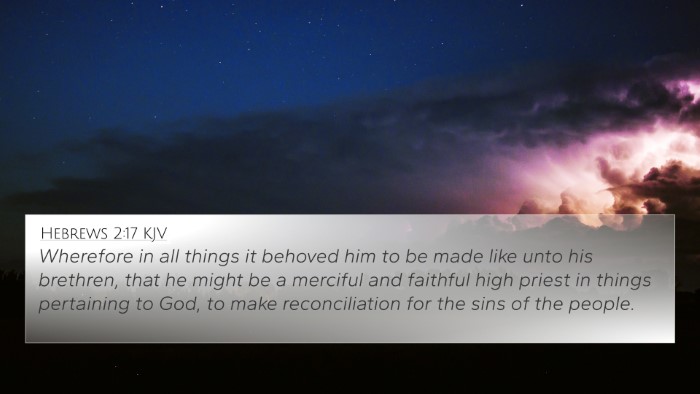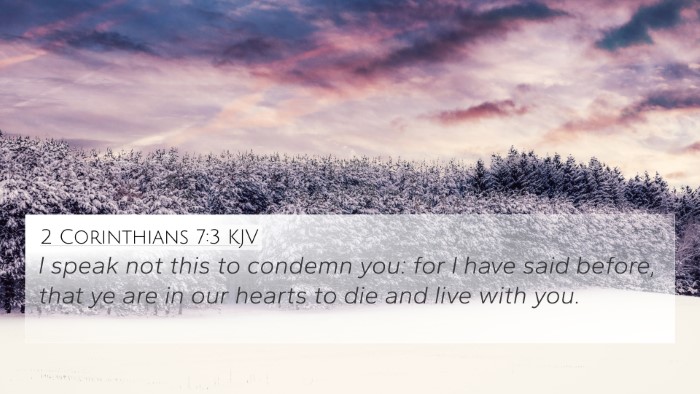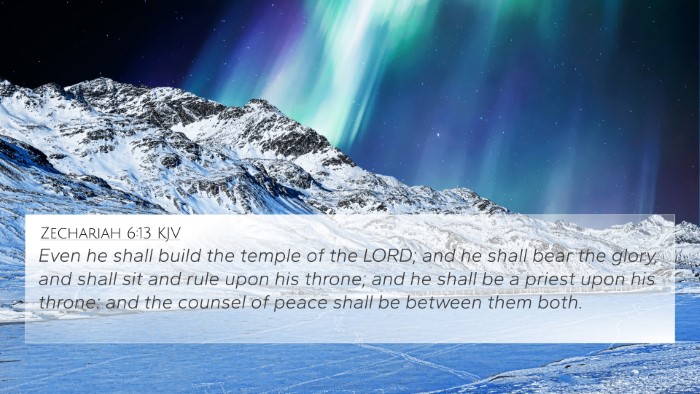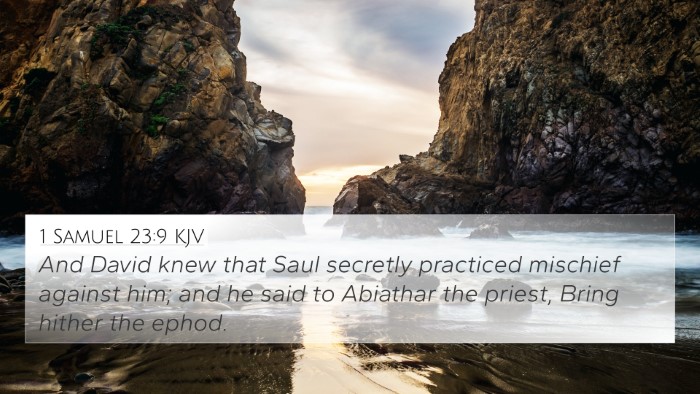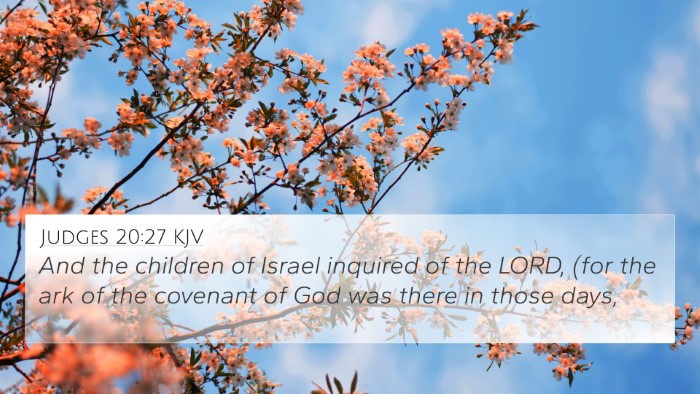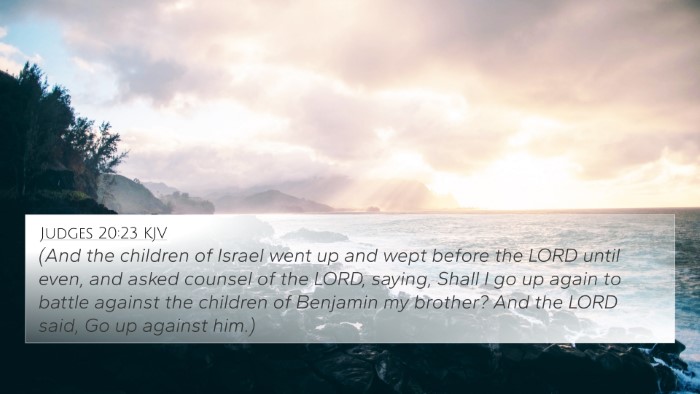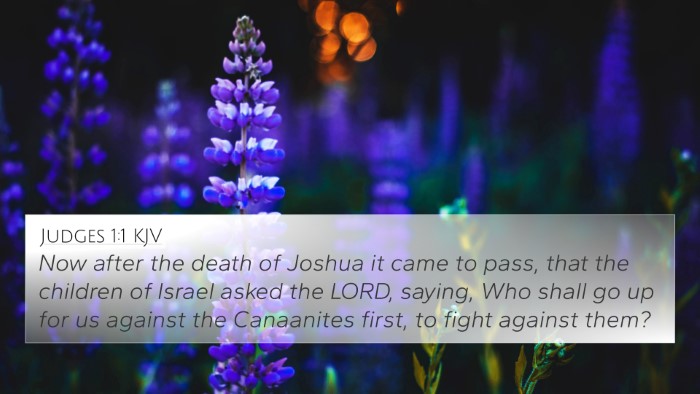Understanding Exodus 28:30: The Urim and Thummim
Exodus 28:30 states, "And thou shalt put in the breastplate of judgment the Urim and the Thummim; and they shall be upon Aaron's heart when he goeth in before the LORD: and Aaron shall bear the judgment of the children of Israel upon his heart before the LORD continually." This verse is a significant part of the instructions God gives to Moses regarding the high priest's garments, specifically his breastplate, which carries profound theological implications and meanings.
The Urim and Thummim: Divine Guidance
According to Matthew Henry, the Urim and Thummim were sacred objects associated with the high priest. They served a critical role in discerning God's will and guiding the Israelites in their decisions. The high priest, through these objects, could receive divine answers to questions posed by the people, acting as an intermediary between God and His people.
Adam Clarke emphasizes that the terms "Urim" and "Thummim" are often translated as "lights" and "perfections," symbolizing clarity and completeness in God's guidance. This suggests that the decision-making process, under the high priest's leadership, would align perfectly with divine will—a theme prevalent throughout scripture.
Significance of the Breastplate
Albert Barnes points out the breastplate's role as a symbol of judgment and representation. The high priest bore the names of the twelve tribes of Israel on his heart, indicating a deep connection and responsibility for their welfare. This imagery resonates with the theme of intercession found throughout the Bible, showcasing the high priest's role in approaching God on behalf of the people.
Theological Reflections and Applications
- Intercession: The high priest's action of bearing the judgment reflects Christ's ultimate intercession for humanity, drawing parallels between Exodus 28:30 and Romans 8:34, where Christ intercedes for believers.
- Divine Guidance: This verse highlights the belief that God provides guidance to His people, akin to James 1:5, encouraging believers to seek wisdom from God.
- Representational Leadership: Just as Aaron represented Israel, believers are called to bear one another's burdens, as highlighted in Galatians 6:2.
Contextual Cross-References
To fully grasp the richness of Exodus 28:30, it is valuable to explore associated scripture passages that provide thematic connections and cross-references. The following verses relate to the concepts of divine guidance, intercession, and priestly roles:
- Numbers 27:21: This verse illustrates another instance where a leader seeks guidance from the Urim.
- Leviticus 8:8: Discusses the consecration of the priest and mentions the breastplate.
- 1 Samuel 28:6: Highlights the quest for divine guidance when the Lord does not answer.
- Psalms 119:105: "Thy word is a lamp unto my feet," emphasizing God's guidance like the Urim and Thummim.
- Hebrews 5:1-3: Explores the role of the priest in making intercession, linking back to Aaron's function.
- Hebrews 7:24-25: Contrasts the temporary priesthood of Aaron with Christ’s eternal priesthood.
- 1 Peter 2:9: Describes believers as a royal priesthood, drawing lines between the Old Testament priesthood and the New Testament community of faith.
Thematic Connections and Application
The themes of divine guidance and representation continue through scripture, illustrating the continuity of God's plan for humanity. By exploring these connections, believers can deepen their understanding of how God interacts with His people across the ages.
Conclusion
In summary, Exodus 28:30 provides rich material for theological reflection. The Urim and Thummim symbolize God's desire to guide His people, while the high priest's role foreshadows Christ's intercessory work for humanity. By engaging with related scriptures, believers can enhance their understanding of inter-Biblical dialogue and thematic connections that span both the Old and New Testaments, helping them find unity in the overarching narrative of Scripture.
Additional Study Methods
- Bible Concordance: A useful tool for identifying related verses and cross-references.
- Bible Cross-reference Guide: Helps navigate connections between verses efficiently.
- Cross-reference Bible Study: Methods that deepen understanding through thematic studies.
- Interpreting Biblical Themes: Look for recurring themes across different books to gain broader insights.
